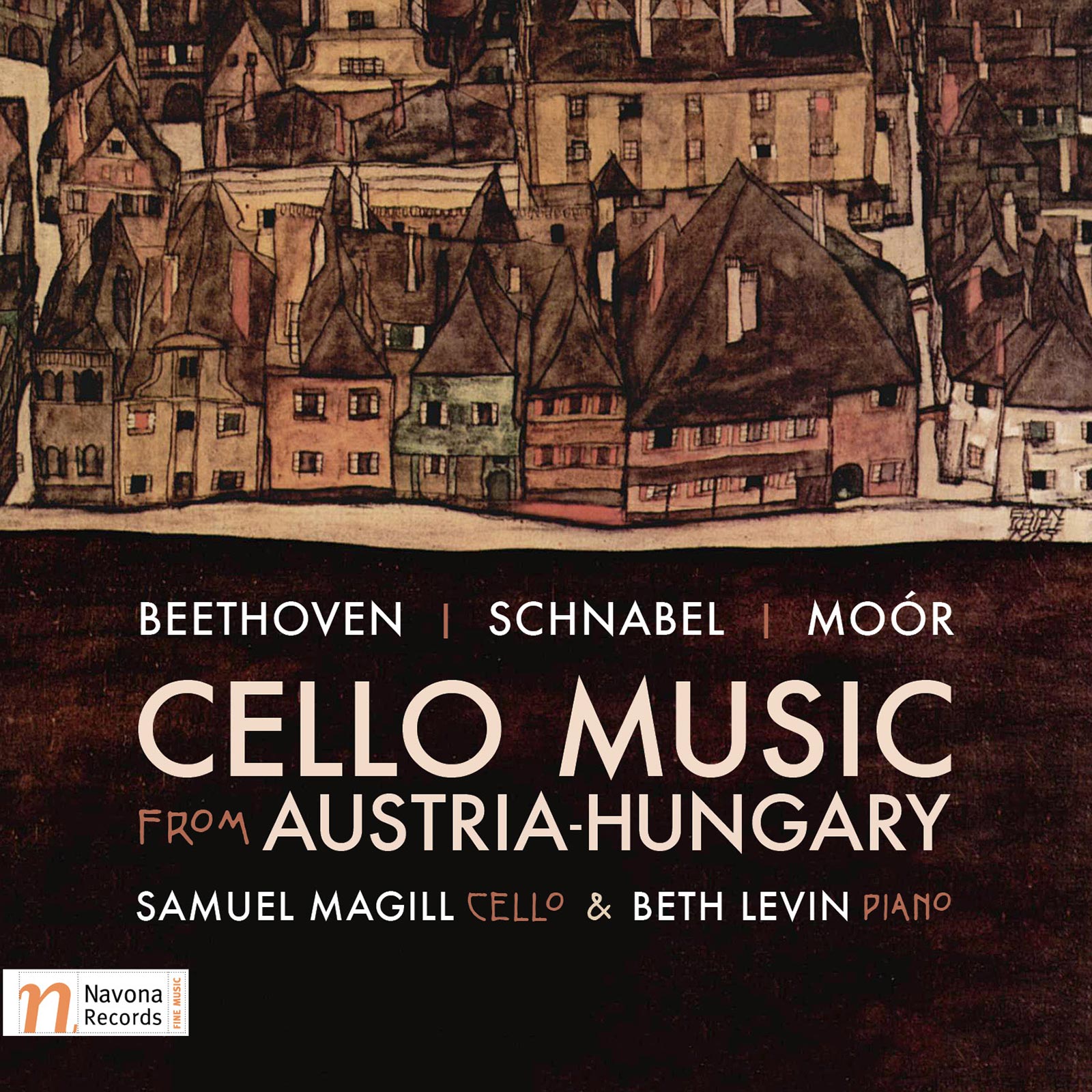
Share Album:
Cello Music From Austria-Hungary
Ludwig Van Beethoven composer
Artur Schnabel composer
Emanuel Moór composer
Samuel Magill cello
Beth Levin piano
The regions of Austria and Hungary have a rich history of music, art, and culture, where composers such as Beethoven, Artur Schnabel, and Emanuel Moór, among many others, developed their craft and influenced the traditions of European art music. On his debut release on Navona Records, CELLO MUSIC FROM AUSTRIA-HUNGARY, cellist Sam Magill presents works by Beethoven, Schnabel, and Moór that not only expand the cello repertoire and illustrate the cellist’s virtuosity, technical aplomb, conviction, and expressiveness, but enrich our understanding of these composers, their music, and their heritage.
An extensive and demanding work, Beethoven’s Violin Sonata No. 9, Op. 47 (1803) is a virtuosic piece originally written for violinist George Bridgetower (1779-1860), yet dedicated to Rodolphe Kreutzer who never actually played the Sonata. Working from an 1822 arrangement of the piece for cello and piano by Beethoven’s pupil Carl Czerny, Magill and pianist Beth Levin perform the challenging work with aplomb and austerity, restoring certain passages from the original manuscript to expose the Sonata’s virtuosic elements while retaining clarity of sound.
Artur Schnabel (1882-1951), a gifted pianist and composer who was influenced by Arnold Schoenberg’s 12-tone system as well as other less restrictive atonal techniques, wrote Sonata for Solo Cello in 1931, utilizing Schoenberg’s concept of developing variation, with passages reminiscent of the extreme chromaticism of Max Reger. Incorporating one of Schnabel’s unique compositional techniques of Aposiopesis, the use of frequent stops and gaps in the music, the Sonata creates a manic fleeing from one direction and emotion to another, eventually fading eerily away to nothing.
To finish off the program, Magill and Levin present the world premiere recording of Ballade for Cello and Orchestra, in E Major, Op. 171 by Emanuel Moór (1863-1931), a piece that is late-Romantic in language, with moments of nationalistic themes and virtuosic passages. It was dedicated to Pau Casals in 1913 but was never published. In 2010 a version for cello and piano which the composer made himself was engraved by the Henrik and Emanuel Moór Society, and which Magill and Levin evocatively present here.
Listen
Artist Information

Samuel Magill
Cellist Samuel Magill has had a rich and varied career as soloist, chamber musician, and enjoyed a highly successful orchestral career. His first Naxos CD of the Cello Concerto by Vernon Duke was hailed as "flat-out magnificent" by the American Record Guide, while The Strad wrote of his world premier recording of Franco Alfano's Cello Sonata "Magill's husky, dark timbre matches the Cello Sonata's yearning intensity to perfection".

Beth Levin
Brooklyn-based pianist Beth Levin is celebrated as a bold interpreter of challenging works, from the Romantic canon to leading modernist composers. The New York Times praised her “fire and originality,” while The New Yorker called her playing “revelatory.” Debuting as a child prodigy with the Philadelphia Orchestra at age twelve, Levin was subsequently taught and guided by legendary pianists such as Rudolf Serkin, Leonard Shure and Dorothy Taubman, Another of her teachers, Paul Badura-Skoda, praised Levin as a pianist of rare qualities and the highest professional caliber.
